This interview was conducted over email and has been edited for clarity.
Osamu Tezuka’s 1967 Dororo manga has had an interesting legacy since its conclusion in 1969. The dark fantasy historical manga has since inspired a 1969 TV anime adaptation from Tezuka’s Mushi Production and a critically acclaimed 2019 anime series from Tezuka Productions and MAPPA.
Besides the anime adaptations, the work also spawned SEGA’s 2004 Playstation 2 video game Blood Will Tell and a 2007 live-action film, as well as inspiring Satoshi Shiki’s currently ongoing remake manga The Legend of Dororo and Hyakkimaru, and the 2022 manhwa webtoon Dororo Re:Verse.
Atsushi Kaneko’s Search and Destroy is another remake of the manga series that brings the original story into a new direction. In his take on Tezuka’s Dororo, his work transforms the turbulent Sengoku era period of the original story’s setting into a cold, dark dystopian cyberpunk cityscape, where humanity grapples with its relationship between the natural and artificial.


Anime Trending had a chance to interview Atsushi Kaneko to discuss his overall vision of the manga, his thoughts on cyberpunk and technology, and why anger is a very important emotion for his work.
How were you first approached to develop Search and Destroy for the Tezucomi manga anthology and what were your overall thoughts on the experience?
When launching Tezukomi, a magazine that contains works tributing Osamu Tezuka, I was on the list of people for the artists for that tribute and they actually did have me as one of the artists. We had the freedom to choose from anything, so I chose Dororo, which had a strong impression [on] me when I read it as a child.
When I actually started working on an Osamu Tezuka work, I re-read Dororo over and over and I realized the deepness [and] boldness of its settings, and the elaborateness and was astonished by all of it. At the same time Tezuka’s work expresses his emotions straightforwardly, so through the tribute, I think I was able to express my emotions without hiding it.
There have been several remakes of Osamu Tezuka’s manga throughout the years, with one recent example being Naoki Urasawa’s Pluto as a modern take of Astro Boy. What was it like to reimagine Dororo as a cyberpunk thriller and add your own elements to the story?
Actually, before I was asked to work on this tribute, I had a plot in my mind about a story of humans and robots and something between that. Later on, I worked on the Dororo tribute and when I combined those ideas, I realized that it had a chemistry I did not expect and that became Search and Destroy.
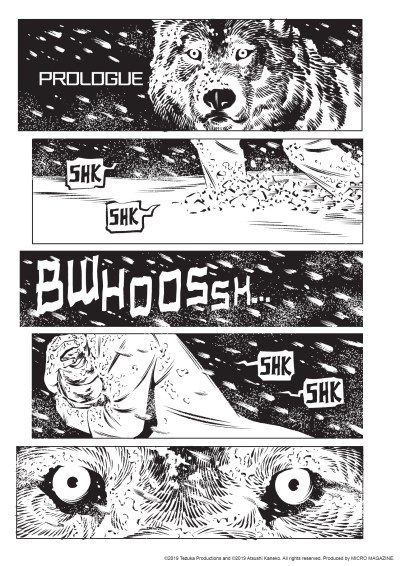

What aspects of the cyberpunk genre were you most excited to explore and incorporate into your manga?
First of all, when setting the story in a near future world, I did not want it to look like an ordinary cyberpunk image. My goal was to draw a near future that no one has ever done before, with snow that shows the toughness of the natural environment. I also included imagery of East European communist nations.
For props, fashion, and architecture, I collected various images from various times and combined them together to create an effect that makes it hard to tell if it is the future or the past, while also not making it like a style that already exists, such as steampunk. Search and Destroy is like a parallel world. I had a fun time finding these inspirations, putting them together, and making my own world.
Were there any aspects of Tezuka’s original Dororo manga that you really connected with and made sure to use in Search and Destroy? Were there any parts of the original story that you were comfortable omitting?
More than anything, “the smell of death” that permeates the whole Dororo story is an aspect I should definitely not omit. For example, in Dororo, there is a ghost of a stray dog that follows Hyakkimaru, and in Search and Destroy, I have drawn it as a wolf who keeps on following Hyaku’s smell of blood from its birth and wants to take her life.
Conversely, one element that I left out was Dororo’s feelings of love for Hyakkimaru. This was partly because I changed the gender of the two main characters, but I also wanted to create a subtle tension between the two, so I left this out.
Anger, rage, and destruction dominate the overall tone of Search and Destroy, especially in the earlier chapters. Why was it necessary for you to make sure those feelings were prevalent throughout the manga?
I sense [Tezuka’s] deep anger not only in Dororo, but in all of [his] works. And for me, anger is a strong motivation when I work on a story as a manga artist.
Dororo is like a cry of life from a small existence that has been oppressed, and that cry continues to ring from all over the world, both in the era when Tezuka wrote it and in the present day in which we live. If Dororo is the story of Tezuka’s anger, then I thought that Search and Destroy must be the story of my own anger. I intended to pour out my anger towards the world I live in today into this work.
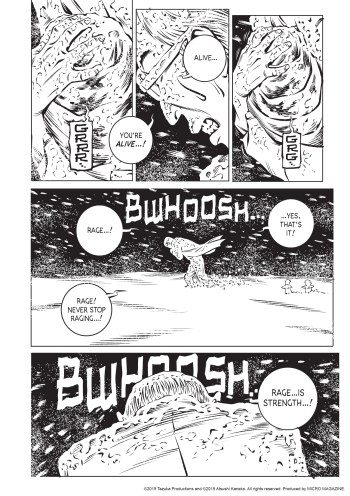

How does the manga reflect your personal experiences or beliefs? Are there elements of your own life that you infused into the narrative and characters?
My own experiences are not often directly reflected in my stories, but they can suddenly appear in small details or expressions of emotion. Since I was a boy, I have felt anger towards this cruel and contradictory world. People around me would ask me strangely, “What are you so angry about?” The words that are spoken to Hyaku in Search and Destroy come from there.
The manga features many panels with minimal dialogue that rely heavily on visual language. How were you able hone your drawing skills and let the artwork speak for itself? Did you take inspiration from your background in cinema?
I don’t like to use too much dialogue, especially as a way to express emotion. Using too many words limits the reader’s imagination and limits the meaning of the work. I want my books to be able to mean different things to different people. To achieve this, I aim to use as few lines as possible and to allow readers to understand my work from the actions and events of the story.
I do think that film has a strong influence on my storytelling. However, manga has no music or sound, and there’s no way to express the time from the length of a cut. So instead, I searched for a way to do that with art and panels, and as a result, I was able to make my own technique.
Many manga artists now use computers to work on their sketches and individual chapters, while some may feel more comfortable working on paper with analog tools. Why did you choose to work on Search and Destroy using an iPad? Was it a challenge to transition from a brush pen to an Apple Pen?
First of all, I like new things, so if there are new art tools, I want to try them. I have tried many digital art tools in the past, but they did not fit me well and I never used them for work. But when I tried the iPad, I liked it right away and, after a little practice, I started using it for my interior pages.
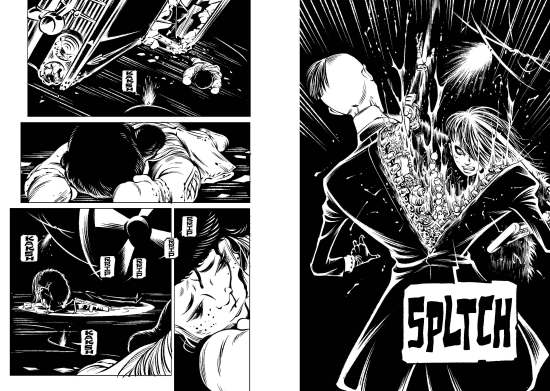

The Apple Pen almost feels the same as drawing on paper, so the transition from analog to digital was not a big deal. Also, unlike with drawing on paper, you can redo it many times. And the number of things you can do, like drawing white lines on a black background and digital processing, has expanded the range of expression, which makes drawing more fun.
You’ve spoken about your history within the punk subculture, which strongly preaches non-conformity, anti-capitalist, and anti-authoritarianism values. How did those tenets of the punk ethos guide the development of the manga’s characters and story?
I discovered punk when I was a boy, and I have encountered various art forms such as film and literature through the lens of punk. Perhaps that is why art to me is essentially anti-establishment and anti-authority.
I will always create stories from the perspective of the people, not those in power. Not only that, the protagonist will be portrayed as someone who has been rejected by the world — not someone who has adapted to it — because that is what it means for me to be an artist, and it represents the person I am.
The world of Search and Destroy is divided into people that have embraced technology for the worst and people who’ve retained their human body parts. How would you describe the role technology plays in the manga? Did any real-world trends influence your portrayal of it?
I think the technology in this story is more like magic than science. The magic that was created to fulfill people’s desires only brings out new desires, and people become consumed by their own bloated desires and lose their humanity. Meanwhile, the creatures born from technology yearn for the most primal part of the human experience, their “senses,” but as a result of obtaining these, they too begin to have limitless desires. I think technology in the real world, like what was once called magic, can also be said to be the embodiment of people’s desires.
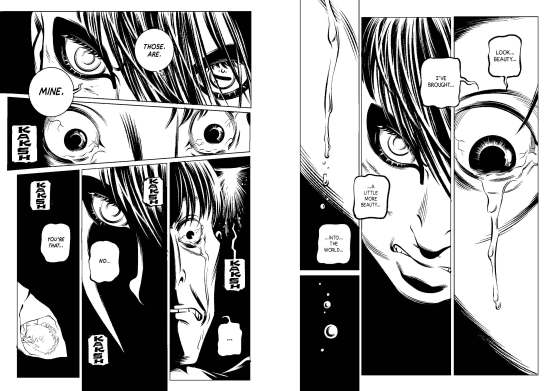

The modern day battlefield with AI and drones may be a realization from someone’s desire.
The original Hyakkimaru in Dororo was male, while in your manga, Hyaku was made female. Why was it necessary for you to adopt that change to the protagonist and what do you think it adds or changes to the character overall?
The setting of having one’s body treated as an object, cut apart, and consumed seems to be the very essence of women in this society. For that reason, I thought that the protagonist would have a deeper meaning if he was a woman.
As a result, the story became a story about identity [and] reclaiming one’s life as one’s own. Also, by regaining his human body, a paradoxical development was created in which Momo becomes physically weaker, and also begins to feel fear and uncertainty.
In the prologue of the manga’s first volume, Frederico Anzalone called Hyaku a “pretty hate machine” that is bursting with anger at the people that stole her future. What is your message to younger people that are feeling hopeless and facing many issues caused by previous generations?
In order to stay normal in this crazy world, you have to accept this world too. If you feel a sense of discomfort and you think that you are different, you should be proud.
The main theme for Search and Destroy is “anger.” I hope that the anger contained in this story will resonate with the anger hidden in your own heart.
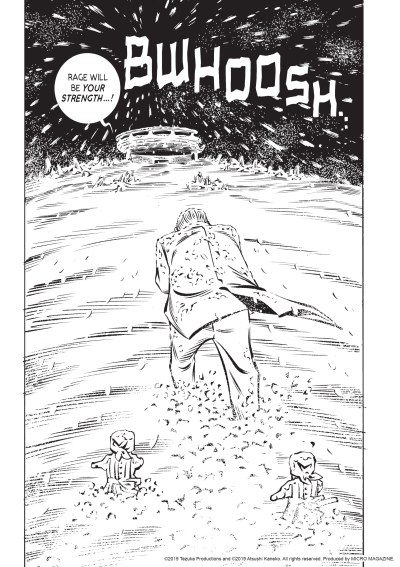

The first volume of Search and Destroy was released in English by Fantagraphics and MSX: Mangasplaining Extra on July 23, 2024. The second volume is expected to be released on March 4, 2025.
Questions submitted by William Moo and Isabelle Lee.
Want to read more interviews like this? Subscribe to our newsletter to get more content in your inbox!
